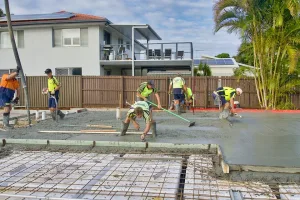In construction or refurbishment, basically the entire process of reinforcing the supporting structure of a structure or other structure. There are many ways to reinforce a structure, depending upon its purpose and construction. There are many ways to reinforce a structure. These include steel plates, wooden boards, concrete supports, iron rails and steel bars. It is useful to understand the basics of steel reinforcement to make construction or renovations easier.
The initial stage of any structure is the footing which are the first point that is not only used for stability, but is also important in terms of load-bearing capacity. It is the responsibility of the engineer to design a strong footing so that the whole structure can bear the load of the structure’s weight. There are several ways to design the footing, including the post-fixing, double piling, torsion, and dynamic alignment systems. Depending on whether the building is being constructed or renovated, the type of support required will determine the best method to use.
The bearing wall is the second level of structural support. This is generally a row of upright slabs of timber, metal or concrete stacked up against each other to provide a strong bearing wall for the structure. The most common method of installing a bearing walls is the post fixing system. This involves a series or beams of slabs or beams that are vertically fixed into the ground. Some buildings have vertical posts that are fixed horizontally into the ground while others have them installed at right angles.
The most common type of support for underpinning is the beam, or post fixing. This method is similar in function to the beam, but it is more suitable for buildings that don’t need to hide concrete or timber walls behind walls. To make walls stronger, the beam can be used with the post fixing technique.
Before the introduction of the beam method of underpinning, contractors often required two workers to carry out the task. These workers were located at the base of the building’s slabs and were responsible for manually holding the beams in place using ladders. Another worker lifted beams. The beams were not able to be moved, so manual labor was necessary to place them correctly. This process became more laborious and inefficient over time.
An underlay can be installed before the foundations of a building are laid. It has many benefits. First of all it provides an extra layer of protection to the base of the building from the weather. The soil will hold the soil layer in place, preventing rainwater, snow, and ice from entering through windows and doors. The soil also works as a damp proofing agent. Rainwater will evaporate when it comes in contact the soil below. Instead of pooling, it will evaporate and seep into the underlying structure, causing decay and rot.
An underlay also makes it easier to maintain the building. Without this extra layer of soil the foundation will have to be dug deeper to prevent water and debris from penetrating the floor. It is important to keep in mind that different soil densities melbourne underpinning will be required for different buildings. An excellent general guideline is approximately 0.5% of the floor area should be covered by the soil of the building
A thin layer of plastic will also be applied to the floor if the soil density is lower than the required thickness. This will protect the floor from moisture and water damage but will not provide a solid footing for the structure. A foundation engineer can measure the area and calculate the necessary soil thickness to determine the proper amount of soil for the foundation. A qualified builder can determine the required thickness and recommend the best ways to improve drainage. Once the required thickness has been determined then excavation can commence. If an old basement exists, you should take steps to drain it properly. Then, you can replace it with an elevated, reinforced floor.

